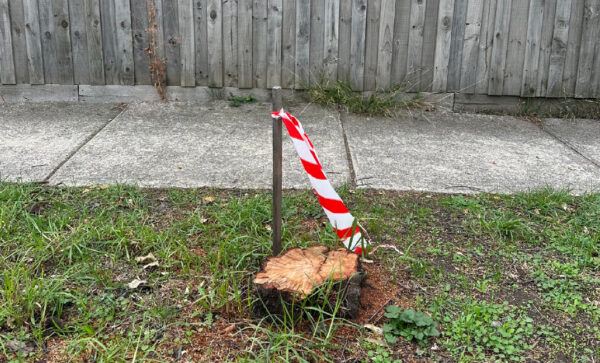By Ethan Seiderman
Residents in Melbourne’s west have accused council contractors of ‘butchering’ healthy street trees, claiming aggressive pruning is destroying native vegetation and worsening already low canopy cover.

The controversy comes amid long-running efforts to green Melbourne’s west, where tree canopy cover is among the city’s lowest and extreme heat events are intensifying. Initiatives like Greening the West have planted over one million trees to combat heat stress in the Brimbank, Hobsons Bay, Maribyrnong, Melton, Moonee Valley and Wyndham municipalities, where canopy cover sits well below the 26 per cent average found in the city’s east.
“The sound of chainsaws is never a good way to start the day,” says Newport resident Liz Cyarto, who witnessed the aggressive pruning of flowering native bottlebrush trees in her neighbourhood. She says contractors removed well beyond the 15–20% foliage limit recommended by arboriculture standards and did so while the trees were in bloom.
Cyarto says neighbours who question contractors face “dismissive attitudes” and unprofessional conduct. Hobsons Bay Council eventually responded, but she says the pruning continues. “Our mature trees sequester carbon, cool our streets, and absorb harmful air pollutants — they’re essential for community wellbeing,” she says.
“This level of pruning deprives communities of a proper urban forest,” says urban planner Dr Thami Croeser from RMIT’s Centre for Urban Research. “Trees provide less canopy cover, can become structurally imbalanced, and may live shorter lives. It’s a real travesty out west which has really low canopy cover — we need every tree we can get to be healthy, whole and well-maintained.”
Residents have criticised councils for poor oversight and tree species mismanagement, with tall growing natives often planted beneath powerlines, only to be ‘butchered’ once mature. Others have called for better alignment between street maintenance and broader environmental goals.
Brimbank, Hobsons Bay and Maribyrnong councils responded to requests for comment. All said pruning was undertaken in accordance with the Australian Standard and handled by qualified staff or supervised contractors. Maribyrnong also noted its use of quality control audits. Brimbank, which manages around 250,000 trees, said tree death from over-pruning was rare. Wyndham council did not respond by deadline.
Councils say their pruning obligations are constrained by state policy. The Electricity Safety (Electric Line Clearance) Regulations 2020, set by the Victorian Government, impose stricter clearance requirements around powerlines than standard arboricultural guidelines. These rules often compel aggressive cutting, even in low-risk urban settings.
Dr Croeser says the law forces unnecessary and costly canopy loss. “Most residential lines are low-voltage and in low bushfire risk areas,” he says. “But councils are still required to prune large clearances — even where fire risk is negligible.”
The Victorian Government is prioritising the remote risks over the proven dangers of heat as the climate warms, according to Dr Greg Moore OAM, a Senior Research Associate at the University of Melbourne. Writing on the TreeNet website, he says “The Victorian Government is giving more weight to the remote possibility of electrocution or fire than to the certainty and inevitability of increasing heat-related illness and death,” he says. “Surely this constitutes negligence?” ”
A Newport tree (L) cropped beyond the recommended 20%, and a 40 year old plum tree in Spotswood (R) was damaged so severely by ‘pruning’ it soon died and had to be removed.


Here at the Cairnlea Shopping Centre, the Centre Management authorised severe pruning of car park trees, which were NO risk whatsoever to clients, at the start of December last year. Absolute madness just before summer.